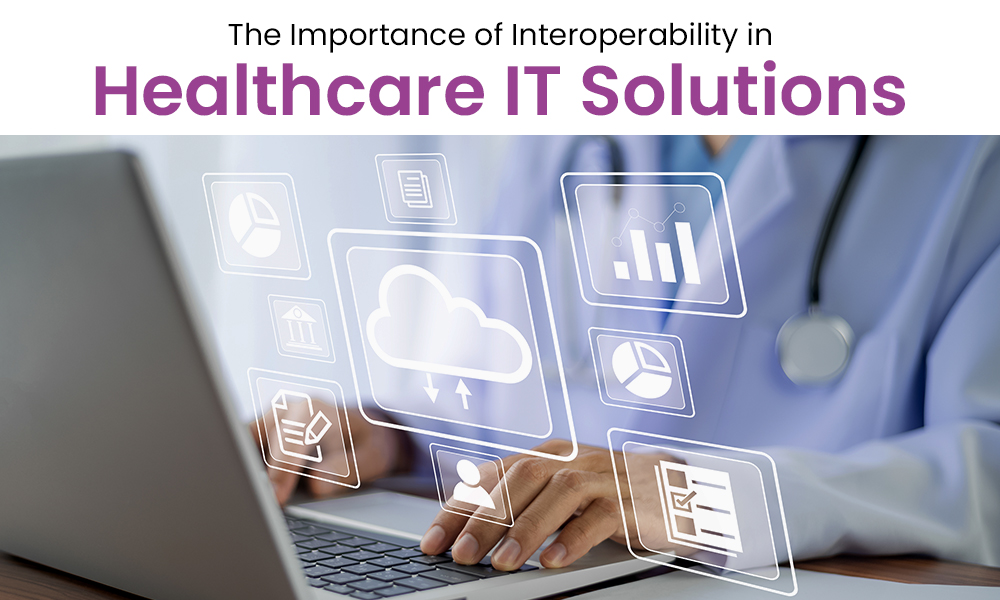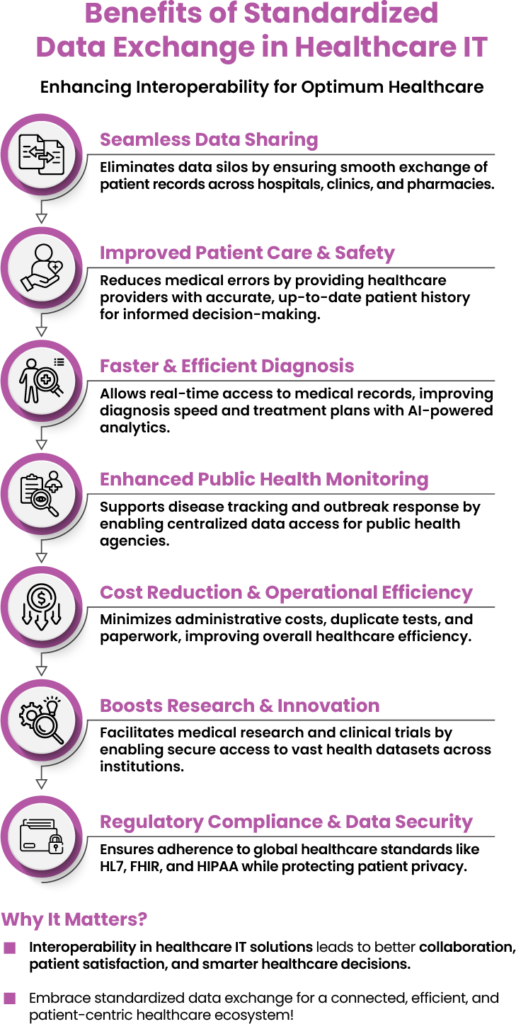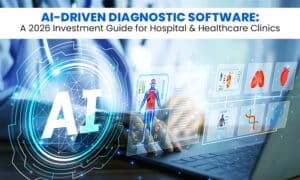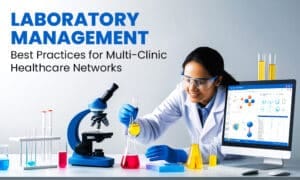
Interoperability in healthcare IT solutions refers to the seamless exchange and utilisation of health information across diverse systems and organisations. It ensures that various healthcare applications, devices, and platforms can communicate effectively, thereby enhancing patient care and operational efficiency. The absence of interoperability can lead to fragmented data, miscommunication, and suboptimal patient outcomes.
In this blog, we will delve into the significance of interoperability in the healthcare IT sector, emphasising its critical role in hospital settings. We will explore the benefits of standardised data exchange and address the challenges faced in achieving interoperability.
Challenges in Achieving Interoperability
Despite its benefits, achieving interoperability in healthcare IT presents several challenges:
Diverse Systems and Vendors
Healthcare organisations often use a variety of systems from different vendors, each with unique architectures and data formats. Integrating these disparate systems is a complex task requiring significant resources and technical expertise.
Data Privacy and Security Concerns
Ensuring the confidentiality and security of patient data during exchange is paramount. Interoperable systems must comply with stringent data protection regulations to prevent breaches and maintain patient trust.
Financial Constraints
Implementing interoperable systems requires significant investment in technology and training. Limited financial resources can hinder the adoption of such systems, especially in smaller healthcare facilities.
Resistance to Change
Healthcare professionals may be resistant to adopting new technologies due to comfort with existing workflows or scepticism about the benefits of interoperability.
Lack of Universal Standards
While standards like HL7 exist, the lack of universally adopted protocols can lead to inconsistencies in data exchange practices.
Also Check- Step Ahead to The Digital World with FHIR Healthcare Interoperability Resources – Ezovion
The Importance of Interoperability in Healthcare IT Solutions
Interoperability is the backbone of modern healthcare systems, enabling the integration of various healthcare IT solutions to provide cohesive and efficient patient care. Its importance is underscored by several key factors:
Enhanced Patient Care
When healthcare solution providers implement interoperable systems, clinicians have immediate access to comprehensive patient histories, including previous treatments, medications, and allergies. This holistic view facilitates informed decision-making, reduces the likelihood of medical errors, and promotes optimum healthcare outcomes.
Without interoperability, healthcare providers often rely on fragmented and outdated records, increasing the risk of misdiagnoses and inefficient treatments. For example, established in 2017, Swiss Personalized Health Network facilitates the integration of health data nationwide, thereby enhancing patient care through more personalised and informed medical decisions.
Improved Coordination Among Healthcare Providers
Interoperability ensures that all healthcare stakeholders—including primary care physicians, specialists, nurses, pharmacists, and emergency responders—can access and update patient information in real time. This capability is particularly crucial for chronic disease management, where multiple providers are involved in a patient’s treatment plan. A well-integrated healthcare IT system prevents redundant tests and conflicting prescriptions, leading to better patient outcomes.

Increased Operational Efficiency
Hospitals and clinics operate in high-pressure environments where efficiency is paramount. Interoperable systems streamline administrative processes by reducing redundant data entry and minimising paperwork. Automated workflows eliminate bottlenecks, allowing healthcare professionals to focus on patient care rather than administrative tasks. This efficiency is particularly beneficial in emergency departments, where quick access to medical records can be lifesaving.
Cost Reduction and Resource Optimisation
By facilitating seamless data exchange, interoperability reduces unnecessary tests and procedures, leading to significant cost savings for both healthcare providers and patients. Hospitals can optimise resource allocation, ensuring that medical equipment and staff are utilised efficiently. Additionally, interoperability reduces the financial burden on healthcare systems by minimising duplicate records and avoiding costly medical errors.
Enhanced Public Health Monitoring and Research
Interoperable healthcare IT solutions enable real-time data sharing with public health agencies, enhancing the monitoring of disease outbreaks and the effectiveness of interventions. Government and research organisations can leverage aggregated health data to track trends, predict epidemics, and develop targeted healthcare policies.
This capability is particularly vital in the wake of global health crises such as the COVID-19 pandemic. For example, the District Health Information Software 2 (DHIS2) is an open-source platform used in over 75 countries for collecting and analysing health data. Its interoperability allows for the integration of diverse health information systems, thereby enhancing public health monitoring and research capabilities.
Also Check- How a Urology EHR Can Transform Your Practice in 2025

Benefits of Standardised Data Exchange
Standardised data exchange is pivotal in achieving interoperability. The adoption of uniform standards ensures that disparate systems can communicate effectively. The benefits include:
Consistency and Accuracy in Patient Data
Standardisation eliminates ambiguities, ensuring that data is interpreted uniformly across all platforms. This consistency enhances the accuracy of diagnoses and treatments. When all healthcare IT systems use the same data format and communication protocols, there is a reduced risk of data misinterpretation, leading to improved patient safety. With Ezovion’s implementation of FHIR (Fast Healthcare Interoperability Resources) and HL7 (Health Level Seven), patient data is seamlessly structured and standardised, allowing accurate and real-time data exchange between healthcare systems, thereby improving clinical outcomes.
Seamless Integration Across Multiple Platforms
Hospitals and healthcare organisations often use a variety of software solutions for electronic health records (EHR), billing, diagnostics, and patient management. Standardised data exchange ensures that these systems can seamlessly share information without requiring costly custom integrations. This interoperability is essential for expanding healthcare networks and accommodating new technologies.
Seamless Integration Across Multiple Platforms
Hospitals and healthcare organisations often use a variety of software solutions for electronic health records (EHR), billing, diagnostics, and patient management. Standardised data exchange ensures that these systems can seamlessly share information without requiring costly custom integrations. Ezovion’s FHIR/HL7-based integration facilitates smooth data flow between multiple platforms, enhancing efficiency and reducing operational costs. This interoperability is essential for expanding healthcare networks and accommodating new technologies.
Improved Collaboration Among Healthcare Providers
Healthcare professionals across different organisations can collaborate more effectively when they rely on standardised data. A patient moving from one healthcare facility to another should not experience delays due to incompatible record-keeping systems. With Ezovion’s FHIR/HL7 framework, healthcare providers can securely access and share up-to-date patient records, leading to better coordination of care and timely decision-making.
Scalability and Future-Proofing Healthcare IT Systems
Standardised systems are more adaptable to technological advancements, allowing for the integration of new tools and applications without extensive reconfiguration. As healthcare continues to evolve with artificial intelligence (AI), machine learning, and predictive analytics, standardised data exchange will facilitate the seamless incorporation of these innovations into existing infrastructures
Regulatory Compliance and Data Security
Adherence to standardised data exchange protocols simplifies compliance with regulatory requirements, as data handling practices are aligned with established guidelines. Regulations such as the Health Insurance Portability and Accountability Act (HIPAA) in the U.S. mandate strict data protection standards. Ezovion’s FHIR/HL7-based solution not only ensures secure data transmission but also aids in maintaining compliance with global regulatory standards. With advanced encryption and access control features, Ezovion enhances data security and protects patient privacy.
Conclusion
Interoperability in healthcare IT solutions is essential for delivering high-quality, efficient, and cost-effective patient care. It facilitates seamless data exchange, enhances collaboration among healthcare professionals, and supports public health initiatives. While challenges such as system diversity, data security concerns, and financial constraints exist, the adoption of standardised data exchange protocols and a commitment to collaborative solutions can overcome these hurdles. Embracing interoperability is a crucial step toward achieving optimum healthcare outcomes in an increasingly digital world.





